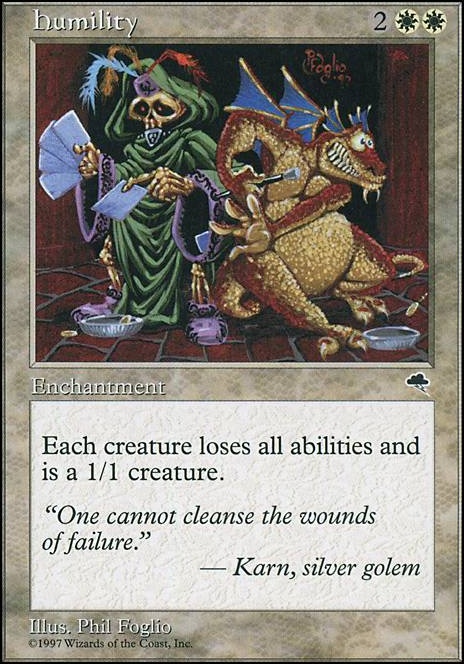Instant (28)
- 1x Ad Nauseam
- 1x Angel's Grace
- 1x Brainstorm
- 1x Chain of Vapor
- 1x Cyclonic Rift
- 1x Delay
- 1x Dispel
- 1x Dramatic Reversal
- 1x Enlightened Tutor
-
1x
Flusterstorm

- 1x Force of Will
- 1x Impulse
- 1x Lim-Dul's Vault
- 1x Mana Drain
- 1x Mental Misstep
- 1x Mystical Tutor
- 1x Natural State
- 1x Nature's Claim
- 1x Negate
- 1x Noxious Revival
- 1x Opt
- 1x Pact of Negation
- 1x Silence
- 1x Swan Song
- 1x Vampiric Tutor
- 1x Whir of Invention
- 1x Winds of Rebuke
Enchantment (9)
- 1x Blind Obedience
- 1x Carpet of Flowers
- 1x Copy Artifact
- 1x Humility
- 1x Mystic Remora
- 1x Rest in Peace
- 1x Rhystic Study
- 1x Sylvan Library
- 1x Wild Growth
Creature (5)
Land (28)
- 1x Adarkar Wastes
- 1x Arid Mesa
- 1x Bayou
- 1x Bloodstained Mire
-
1x
Breeding Pool

- 1x City of Brass
- 1x Command Tower
- 1x Exotic Orchard
- 1x Flooded Strand
- 1x Forest
-
1x
Hallowed Fountain

- 3x Island
- 1x Mana Confluence
- 1x Marsh Flats
- 1x Misty Rainforest
- 1x Polluted Delta
- 1x Savannah
- 1x Scalding Tarn
- 1x Scrubland
- 1x Tropical Island
- 1x Tundra
- 1x Underground River
- 1x Underground Sea
- 1x Verdant Catacombs
-
1x
Watery Grave

- 1x Windswept Heath
Sorcery (12)
Commanders (2)
Artifact (16)
Maybeboard
Instant (5)
Creature (3)
Suggestions
Updates Add
Comments
Attention! Complete Comment Tutorial! This annoying message will go away once you do!
Important! Formatting tips — Comment Tutorial — markdown syntax
Please login to comment
| Top Ranked |
|
| Date added | 7 years |
| Last updated | 4 years |
| Legality | This deck is not Commander / EDH legal. |
| Rarity (main - side) | 13 - 0 Mythic Rares 51 - 0 Rares 16 - 0 Uncommons 16 - 0 Commons |
| Cards | 100 |
| Avg. CMC | 1.71 |
| Tokens | Bird 2/2 U |
| Folders | Competitive edh, 3a) Potential cEDH Decks, CEDH, Saved Decks, Good Stuff, To test, 4c Control, cEDH, Thrasios, Saved Decks |
| Votes | |
| Ignored suggestions | |
| Shared with | |
| Based on | |
| Views |




